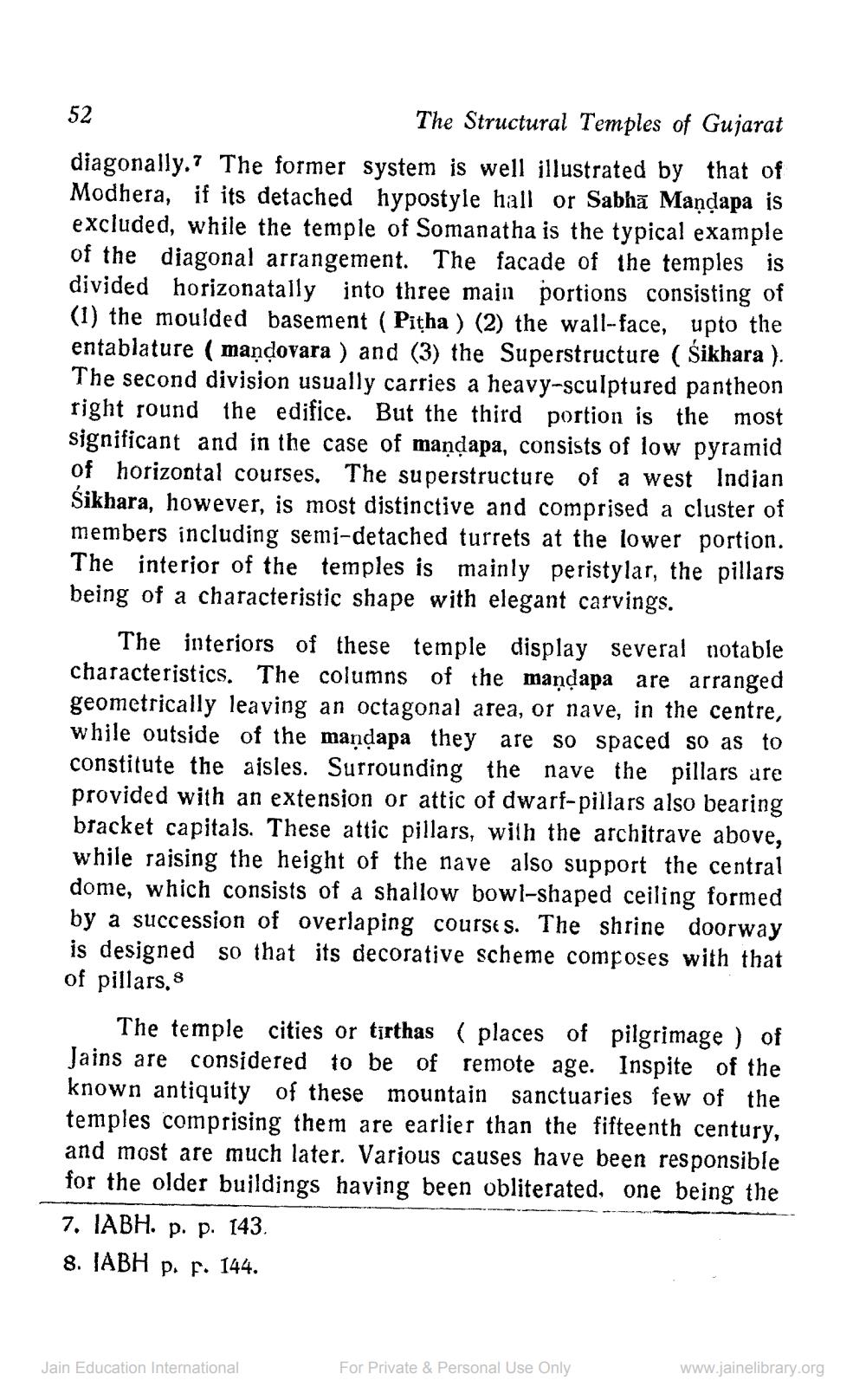________________
52
The Structural Temples of Gujarat diagonally.? The former system is well illustrated by that of Modhera, if its detached hypostyle hall or Sabhā Maņdapa is excluded, while the temple of Somanatha is the typical example of the diagonal arrangement. The facade of the temples is divided horizonatally into three main portions consisting of (1) the moulded basement (Pitha ) (2) the wall-face, upto the entablature ( mandovara ) and (3) the Superstructure ( Sikhara ). The second division usually carries a heavy-sculptured pantheon right round the edifice. But the third portion is the most significant and in the case of mandapa, consists of low pyramid of horizontal courses. The superstructure of a west Indian śikhara, however, is most distinctive and comprised a cluster of members including semi-detached turrets at the lower portion. The interior of the temples is mainly Peristylar, the pillars being of a characteristic shape with elegant carvings.
The interiors of these temple display several notable characteristics. The columns of the maņdapa are arranged geometrically leaving an octagonal area, or nave, in the centre, while outside of the mandapa they are so spaced so as to constitute the aisles. Surrounding the nave the pillars are provided with an extension or attic of dwarf-pillars also bearing bracket capitals. These attic pillars, with the architrave above, while raising the height of the nave also support the central dome, which consists of a shallow bowl-shaped ceiling formed by a succession of overlaping courses. The shrine doorway is designed so that its decorative scheme composes with that of pillars. 8
The temple cities or tirthas ( places of pilgrimage ) of Jains are considered to be of remote age. Inspite of the known antiquity of these mountain sanctuaries few of the temples comprising them are earlier than the fifteenth century, and most are much later. Various causes have been responsible for the older buildings having been obliterated, one being the 7. IABH. p. p. 143. 8. JABH p. p. 144.
Jain Education International
For Private & Personal Use Only
www.jainelibrary.org




